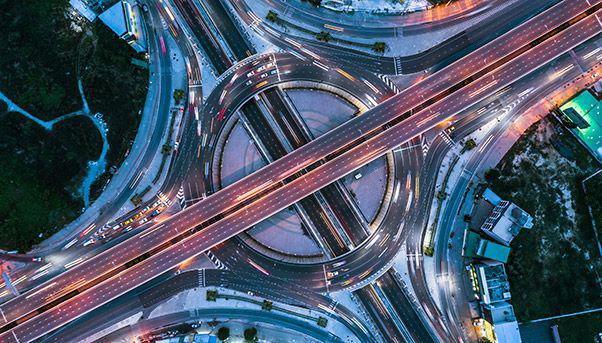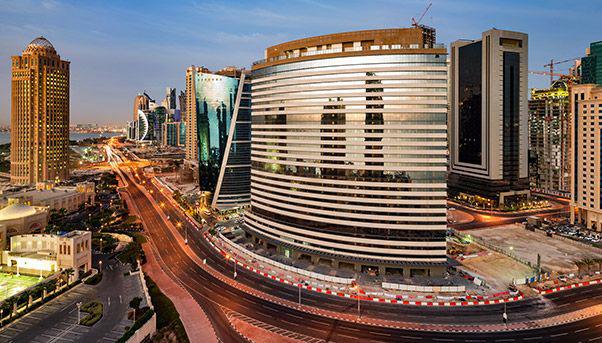
«The worldwide infrastructure industry is quintessential to the very concept of globalization, or in other words the most important economic phenomenon of our times by far». Richard Baldwin, who was born in England and studied economics under the guidance of Paul Krugman, is considered one of the world’s foremost experts on the topic of globalization, of trade policies (and controversies), and on international financial flows. The very same topics that are crucial to understanding where the world today is going.
Professor, are infrastructure works necessary for globalization?
«More than necessary. There’s a specific historical timeframe to keep in mind. Towards the end of the 1800s, between the first and second Industrial Revolution, Great Britain began to equip all of the countries in its vast colonial empire, from Kenya to New Zealand, from India to Canada, from Hong Kong to Australia, with incredibly powerful infrastructure. All of a sudden the English went wild with railroads, bridges, dams, roads, and whatever else was needed to put a country in a position to sprint ahead in terms of industrial development. This campaign was scientifically and accurately planned: British banks were authorised to set up the necessary credit lines for these works, and massive educational programmes were set up for the local population to make the transition from farm to factory. And here is the cherry on the cake: at the same time, the British put up a series of trade barriers to protect the competitiveness of their own manufacturing industry and to create a massive volume of international trade that however did not expand beyond the “internal channels” of the great Empire. This mechanism worked perfectly for nearly a century. Then de-colonialisation arrived and these barriers fell, one by one».
But the infrastructure itself remained, and this is what makes the British colonies stand out. Is that correct?
«Yes, more or less. The French, too, did something similar, on a smaller scale. Once the colonial phase ended, the infrastructure remained, as well as the staff to manage it. And this system worked, I must say, in the majority of the former colonies. There were a few exceptions among African countries, where local conflicts had a negative impact on infrastructure. But even in these cases, after a period of time it was usually fixed back up into shape. In Uganda for example, the British-era railway stations have been literally dusted off, and the rail lines reactivated. And that’s the case in many other countries as well. To be sure, having their own infrastructure was not sufficient to guarantee all of these economies a place in the sun, but fortunately in the years following World War II the International Monetary Fund and the World Bank did their part, and are still continuing to do so, helping these countries from a financial point of view and also helping them to build the architecture of a democratic state».

Doha, Qatar
Moving along to the present, what is the level of freedom actually delivered by the current trading system, and therefore what is the possibility that all economies can benefit, from emerging economies to mature ones?
«Certainly a very high level of freedom, even if it is not perfect. Recent tensions between a few of the world’s most important economies are based on real problems – it must be said – even though they perhaps admittedly may have not been managed in an optimal way. This demonstrates that something is not working. However, it is precisely the fact that people realise there is a problem that enables them to find a solution. As Soren Kerkegaard says, “to understand life we must look at the past, without however forgetting an even more important principle: that we must live life looking at the future”. What the philosopher says is absolutely true».
Your last book is called “The Great Convergence”. What is it about?
«It is about precisely what we’ve been discussing. Let us say that the final phase of globalization began around 1820 almost unnoticed when the Industrial Revolution and the steam locomotive resulted in a boom in the transportation of goods. For the first time ever, my ancestors in London could experience the thrill of eating bread made with American grain, sipping tea from Ceylon sweetened by Jamaican sugar on a tablecloth of cotton from India. The second wave of globalization occurred as I said at the end of the 19th century and it resulted in the boom of infrastructure we discussed. I would identify a third era around 1990, when the computer revolution cut the costs of communications and of the transfer of ideas. This particular phase of globalization was preceded by an intermediate period marked by a short setback. It happened during the 1980s when trade costs fell, industries got together in the G7 and started an intensive phase of innovation to boost growth. Since the cost of transferring ideas fell less than the cost of trade, the innovations stayed where they were, let’s say in the North. The situation changed again thanks to technological innovation: it became possible to produce overseas coordinating the activity from headquarters. This phase, however, has also seen the growth of a great inequalities. We are now witnessing the next phase, which I call the phase of “great convergence,” which has only just begun. Further technological development will enable professionals in Western countries to apply their talents across a larger area: an American engineer can repair a railroad in South Africa by remotely using robots, because tele-presence is no longer science fiction. People in different points of the globe can work together on projects. If knowledge is spread in a healthy way, it will be easier to deal with global relationships in a calmer way. And also domestic relationships».

